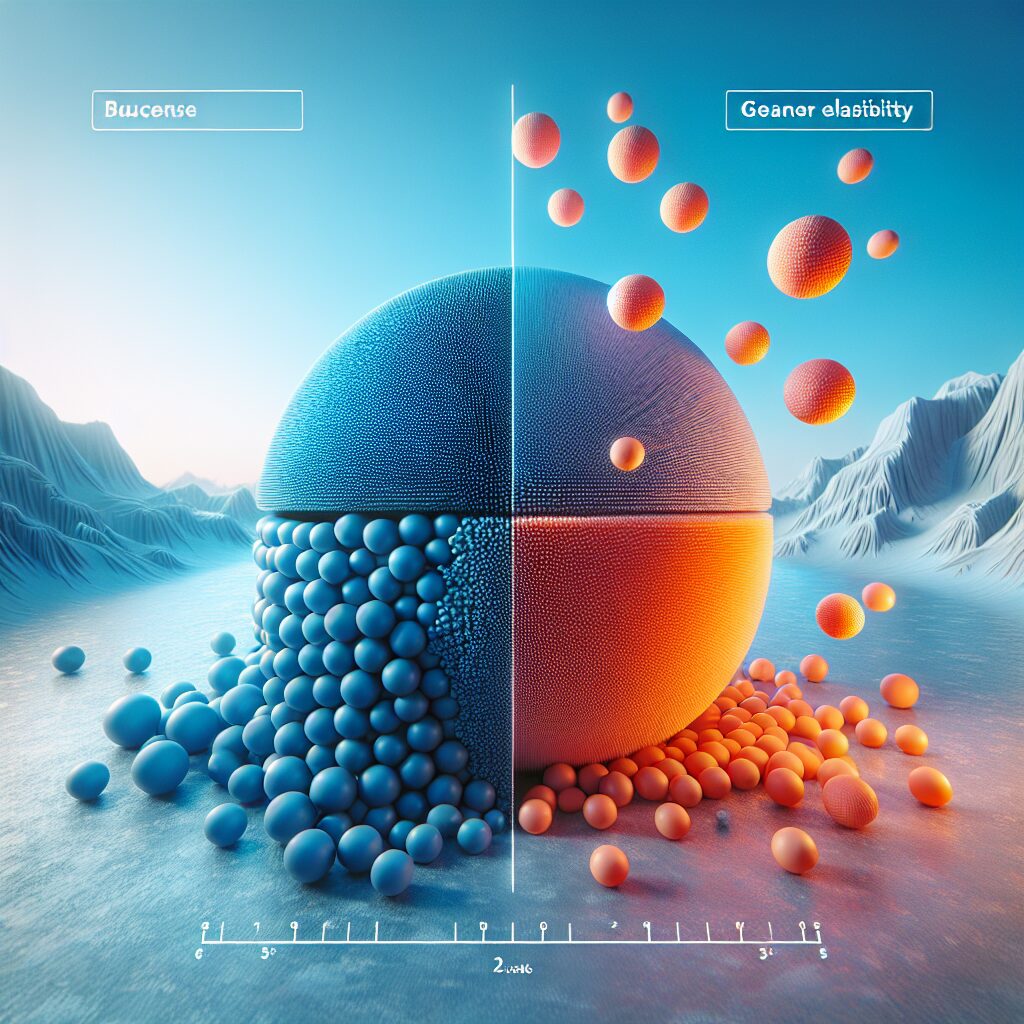Hands-On Bouncing Ball Experiments: Learning Physics
Physics, often regarded as the fundamental science, serves as a key foundation for understanding the workings of our world. Expanding our knowledge of physics not only helps us make sense of everyday phenomena, but it also opens doors to new technologies and discoveries. One of the most engaging ways to explore the fascinating principles of physics is through hands-on experiments, and when it comes to grasping concepts such as motion, elasticity, and energy transfer, bouncing ball experiments prove to be highly effective.
When conducting bouncing ball experiments, one of the intriguing aspects lies in the behavior of the ball upon impact with a surface. As the ball collides, it undergoes a series of transformations, showcasing the interplay between potential energy, kinetic energy, and the laws of conservation. Furthermore, the elastic properties of the ball and the surface it bounces off introduce concepts like restitution and impulse, shedding light on how objects interact and exchange energy in dynamic situations.
In the upcoming part of this article, we will delve into the key takeaways from hands-on bouncing ball experiments. From exploring the relationship between drop height and bounce height, to investigating the effect of different ball materials on the bounce, and even examining the relationship between the angle of impact and the resulting trajectory, we will unravel fascinating insights into the principles of physics. Get ready to unleash your inner scientist and discover the wonders of physics through these captivating experiments.
Key Takeaways
1. Understanding the concept of elasticity is crucial: This article emphasizes the importance of elasticity in understanding bouncing ball experiments. It explains how elasticity is the property that allows objects to return to their original shape after being stretched or compressed.
2. Different material affects the bounce: The article highlights that the type of material used in creating the ball affects its bounce. Different balls made of materials like rubber, plastic, or foam exhibit varying degrees of elasticity, resulting in different bouncing patterns.
3. Newton’s laws of motion play a role: The article introduces Newton’s laws of motion and explains how they interplay in bouncing ball experiments. It emphasizes that the first and second laws are particularly relevant to understanding the ball’s motion and behavior.
4. Bouncing height and velocity are interconnected: The article underlines the relationship between the height of the bounce and the initial velocity of the ball. It explains that the greater the initial velocity, the higher the bounce, demonstrating the direct correlation between these two factors.
5. Experimenting and analyzing results improve understanding: The article emphasizes the importance of hands-on experimentation and analyzing the results to deepen understanding of physics concepts. It encourages conducting various bounce experiments, recording observations, and evaluating the obtained data to draw meaningful conclusions.
What are the Best Hands-On Bouncing Ball Experiments for Learning Physics?
1. Introduction to Bouncing Ball Experiments
Bouncing ball experiments are an excellent way to understand and learn about the principles of physics. By observing the behavior of a bouncing ball, we can explore concepts such as gravity, elasticity, and energy transfer. These hands-on experiments provide a practical approach to teaching physics, making the subject more engaging and interactive for students.
2. Exploring Gravity and Height
One of the fundamental aspects of bouncing ball experiments is understanding the influence of gravity and height on the ball’s motion. By dropping the ball from various heights and measuring its bounce height, students can observe how the potential energy gained during the fall converts into kinetic energy upon bouncing. This experiment helps in comprehending the relationship between potential and kinetic energy, as well as the effects of gravity on the ball’s motion.
3. Investigating Elasticity
The elasticity of a bouncing ball is another crucial concept in physics. By using balls made of different materials or varying their inflation level, students can observe how elasticity influences the bounce behavior. They can analyze how the materials’ properties affect the ball’s ability to store and release energy upon impact. Through this experiment, learners gain a deeper understanding of the elastic potential energy and how it affects the ball’s motion.
4. Examining Surface Impact
The surface on which a ball bounces also plays a significant role in its behavior. By conducting experiments on various surfaces like concrete, grass, or rubber, students can compare the height and duration of the bounces. This experiment helps them understand the impact of surface characteristics such as hardness, texture, and friction on the ball’s motion. It also provides insights into the conservation of energy and how surface properties affect the ball’s ability to regain energy after each bounce.
5. Exploring Air Resistance
Air resistance is another factor that affects the bouncing behavior of a ball. By comparing the ball’s bounce in regular conditions and within a vacuum, students can observe how air resistance influences the height and duration of the bounce. This experiment allows learners to grasp the concept of terminal velocity and the balance between gravitational force and air resistance acting on the ball.
6. Applying Mathematics to Bouncing Ball Experiments
Bouncing ball experiments offer an opportunity to apply mathematical principles, including measurement, data analysis, and graphing. Students can gather data on the bounce height, time of flight, and other relevant variables, and then analyze and interpret the results. Engaging in mathematical calculations and graph plotting enhances students’ critical thinking and problem-solving skills, bridging the gap between theoretical concepts and practical applications.
Guides and Tips for Hands-On Bouncing Ball Experiments: Learning Physics
1. Use balls of different sizes, materials, and inflations to observe how these factors affect the bounce behavior.
2. Ensure a controlled environment by conducting the experiments indoors or in an area free from wind and other disturbances.
3. Keep track of the variables by measuring and recording the height of the drop, bounce height, and time of flight.
4. Graph the collected data to visualize the relationship between the variables and identify any patterns or trends.
5. Encourage students to ask questions, make predictions, and formulate explanations based on their observations and data analysis.
6. Emphasize the importance of safety measures during the experiments, such as wearing protective goggles and conducting the experiments on a suitable surface.
7. Discuss real-world applications of bouncing ball physics, such as sports and engineering, to foster students’ interest and understanding.
Frequently Asked Questions
1. How can bouncing ball experiments help in learning physics?
By conducting bouncing ball experiments, students can understand the concept of potential and kinetic energy, observe the law of conservation of energy, analyze the relationship between height and rebound height, learn about elastic collisions, and grasp the basics of how objects move.
2. What materials are needed for hands-on bouncing ball experiments?
To perform bouncing ball experiments, you will need a rubber ball, a ruler or measuring tape, a flat surface, and a device to measure time (such as a stopwatch or smartphone).
3. How can one calculate the rebound height of a bouncing ball?
To calculate the rebound height, measure the initial drop height and the subsequent bounce height. Divide the bounce height by the drop height, and you will get the rebound height as a decimal or a percentage of the drop height.
4. Why is it important to perform multiple trials in bouncing ball experiments?
Performing multiple trials helps ensure accuracy and reliability in the results obtained. It allows for the identification and elimination of outliers and provides a better understanding of the relationship between variables.
5. What factors affect the rebound height of a ball?
The rebound height of a ball can be influenced by several factors, including the drop height, surface type, ball material, air pressure inside the ball, and angle of impact.
6. Can bouncing ball experiments be used to study the relationship between energy and motion?
Yes, bouncing ball experiments are an excellent way to observe the relationship between energy and motion. They enable students to analyze how potential energy is converted into kinetic energy during a bounce and understand the principles of mechanical energy conversion.
7. What can bouncing ball experiments teach about motion?
Bouncing ball experiments can teach students about the principles of motion, such as velocity, acceleration, and the effects of gravity. They provide a hands-on approach to comprehend concepts like freefall, vertical motion, and the principles of motion of a falling object.
8. Are there any safety precautions to consider when conducting bouncing ball experiments?
It is essential to ensure a safe environment while conducting bouncing ball experiments. Make sure the experiment area is clear of obstacles, wear eye protection in case of ball breakage, and keep a safe distance from others to prevent accidents or injuries.
9. How can bouncing ball experiments be modified for younger students?
For younger students, bouncing ball experiments can be simplified by focusing on basic concepts like observing how high different balls bounce or comparing the bounce height on different surfaces. Using larger balls with more bounce is also recommended for ease of handling.
10. What other physics concepts can be explored through bouncing ball experiments?
Bouncing ball experiments can be used to delve into topics such as energy transfer, friction, air resistance, and the influence of different variables on the behavior of a bouncing ball. They can also serve as a starting point to discuss more complex concepts like collisions and the laws of motion.
Final Thoughts
The hands-on bouncing ball experiments are an engaging and effective way to introduce students to the principles of physics. By actively participating in experiments and directly observing the behavior of a bouncing ball, students can grasp fundamental concepts and develop a deeper understanding of motion, energy, and various other physics principles. The interactive nature of these experiments not only promotes active learning but also fosters critical thinking and problem-solving skills.
Furthermore, bouncing ball experiments provide an opportunity for students to experience the scientific method firsthand. By asking questions, formulating hypotheses, conducting experiments, and analyzing data, students can gain confidence in their abilities to investigate and understand the world around them. Whether in formal classrooms or informal educational settings, hands-on bouncing ball experiments serve as an essential tool for making physics accessible, enjoyable, and memorable for learners of all ages.




